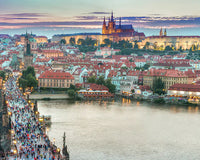Malta, one of the most beautiful islands in the Mediterranean, is a must-see destination for lovers of history, culture and sublime landscapes. This archipelago offers a unique blend of historic relics, heavenly beaches and charming villages. Whether you're passionate about archaeological sites, water sports or simply looking to relax, Malta has it all.
In this visitor's guide, we reveal the best attractions, practical tips and must-sees to make the most of your stay in Malta. Get ready to discover a fascinating Mediterranean treasure!
Travel to Malta: must-see places
What can you see in the magnificent Maltese archipelago? Let's take a look at some of our favourite places to visit on a trip to Malta, a real gem in Europe!
Valletta
Valletta, the capital of Malta, is a true architectural marvel: essential for a successful trip to Malta. Founded in the 16th century by the Knights of the Order of St John, this fortified city is packed with historic sites.
Start your visit at the majestic co-cathedral of St John, a masterpiece of Baroque art, where you can admire works by the famous painter Caravaggio. Then wander through the city's cobbled streets to discover hidden treasures such as the Palace of the Grand Masters and the Knights' Inns.
The Gardens of Upper Barrakka offer breathtaking views of the Grand Harbour and the Three Cities. Tickets for St John's Co-Cathedral cost around €15 per adult.

Mdina
Nicknamed the ‘Silent City’, Mdina is a medieval hilltop town with a magical, timeless atmosphere.
Enter through the majestic city gates and immerse yourself in a past rich in history. Visit St Paul's Cathedral, with its blend of Baroque and neo-classical architecture, and the adjacent museum.
Lose yourself in the narrow streets and discover architectural treasures such as Palazzo Falson, a well-preserved medieval house. Admission to St Paul's Cathedral is around €5 per adult.
The megalithic temples
Malta's megalithic temples are among the oldest prehistoric monuments in the world, dating from 3600 to 2500 BC.
The temples of Ħaġar Qim and Mnajdra, located on the island's south coast, offer a fascinating insight into Malta's Neolithic civilisation. Entrance tickets to these archaeological sites cost around €10 per adult. The temples of Tarxien, near Valletta, feature impressive sculptures and reliefs and entrance tickets cost around €6 per adult.
The island of Gozo
Gozo, the second largest island in the Maltese archipelago, is a haven of peace with its picturesque landscapes and rural atmosphere.
Visit the citadel of Victoria, which offers a breathtaking view of the island, as well as the megalithic temples of Ġgantija, a UNESCO World Heritage Site. The Ta' Pinu basilica, an important pilgrimage site, is also well worth a visit.
Tickets for the temples of Ġgantija cost around €10 per adult.
The Three Cities
The Three Cities, made up of:
- Vittoriosa
- Senglea
- Cospicua
are fortified towns steeped in history and charm that you should visit without delay on your holiday in Malta!
Stroll along the magnificent quays of Vittoriosa and visit the Inquisitor's Palace. In Senglea, take time to admire the panoramic views over Valletta from the gardens of Safe Haven.
In Cospicua, explore the town's imposing bastions and soak up the authentic atmosphere of this unspoilt Maltese town.

The beaches of Malta
Malta's beaches offer an idyllic setting to relax and refresh. Mellieħa Bay beach, one of the largest on the island, is perfect for families with its shallow waters and golden sand.
Entrance tickets to public beaches are usually free, but some places offer equipment for hire. Ghajn Tuffieha is a less-frequented beach, surrounded by cliffs and accessed by a magnificent staircase.
Blue Lagoon beach on the island of Comino is a real paradise with its crystal-clear waters, but access by boat can cost between €10 and €20.
How do I get to Malta?
Malta is a very popular island with tourists looking for a dream holiday. If you too would like to enjoy a successful holiday in Malta, let's take a look at how to get there easily.
By air
Malta International Airport (MLA) is the main point of entry into the country.
Several airlines offer direct flights to Malta from major European cities such as :
- Paris
- London
- Rome
- Berlin
Fares vary depending on the season and the period of booking, but on average a return ticket from a European city can cost between €100 and €300 depending on the time of year and the airline chosen.
On arrival at the airport, you can easily reach your accommodation by taxi, shuttle bus or hire car.
By boat
Malta is also accessible by sea, with regular connections from several Mediterranean ports. Ferries operate from cities such as Catania in Sicily and Pozzallo in Italy, offering a scenic option for travellers who prefer to travel by sea.
Ferry fares vary according to the season, the shipping company and the type of cabin chosen. For example, a one-way ferry ticket from Catania in Sicily can cost between €50 and €100 per person, depending on the company and type of service.
By car
For travellers from mainland Europe, travelling to Malta by car is an option worth considering. Ferries operate between Sicily and Malta, allowing passengers to travel with their own vehicles.
Ferry fares for cars vary depending on the size of the vehicle and the season, but on average a one-way trip for a standard car from Sicily can cost between €100 and €200. Once in Malta, you can explore the island at your own pace and discover its hidden treasures in complete freedom.

When should you visit Malta?
Choosing the right time to visit Malta is essential for making the most of this enchanting Mediterranean destination. Here's an overview of the seasons to consider when planning your trip to Malta!
Summer (June to August)
Summer is Malta's peak tourist season, with sunny days, warm temperatures and balmy evenings. It's the perfect time to enjoy the golden sandy beaches and crystal-clear waters of the Mediterranean. Local festivals, open-air celebrations and cultural events bring the island to life throughout the summer.
However, July and August can be very hot, with temperatures often exceeding 30°C, which can make outdoor activities a little exhausting for some travellers. Prices for accommodation and tourist activities tend to be higher during this period due to high demand.
Autumn (September to November)
Autumn is a pleasant time to visit Malta, with mild temperatures, fewer tourist crowds and more affordable prices. September and October often offer warm, sunny weather, ideal for exploring historic sites and enjoying the beach without the sweltering heat of summer.
In November, temperatures start to drop slightly, but generally remain mild and comfortable. It's also harvest time in Malta, with plenty of local produce markets and food festivals to enjoy.
Winter (December to February)
Winter in Malta is mild and temperate, with temperatures generally between 10°C and 15°C. It's a quiet time to visit the island, with fewer tourists and lower accommodation prices.
December and January can be a little wetter, with occasional showers, but the sun is always out. This is also Malta's festive season, with Christmas markets, concerts and lively celebrations throughout the country.
Spring (March to May)
Spring is a wonderful season in Malta, with nature waking up, flowers blooming and temperatures starting to warm up. March and April offer mild, sunny days, ideal for exploring historic sites and hiking in the Maltese countryside.
In May, temperatures become warmer, but tourist crowds remain relatively low, making it an ideal time to visit Malta before summer arrives.











